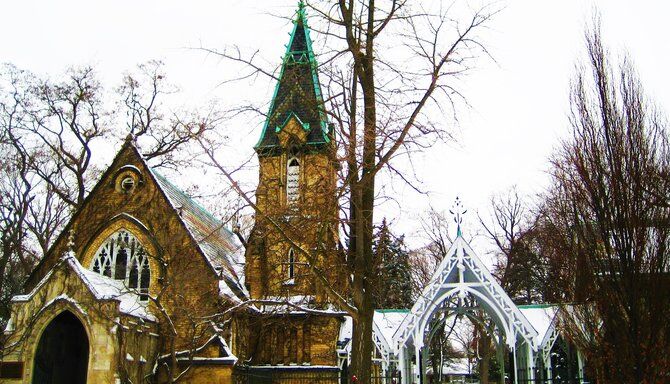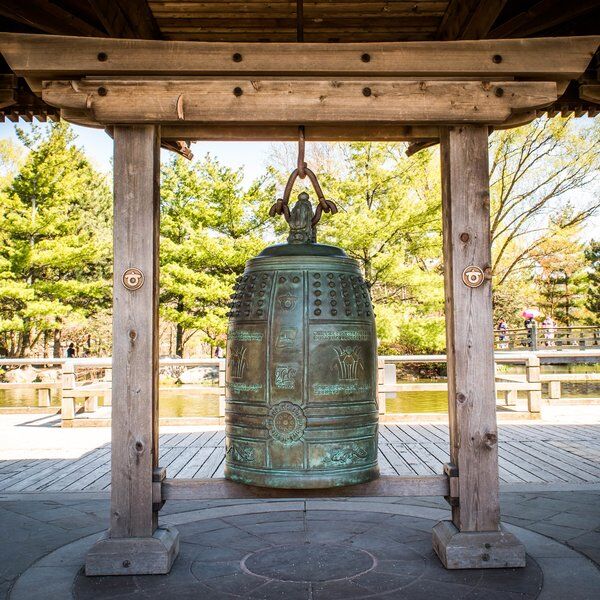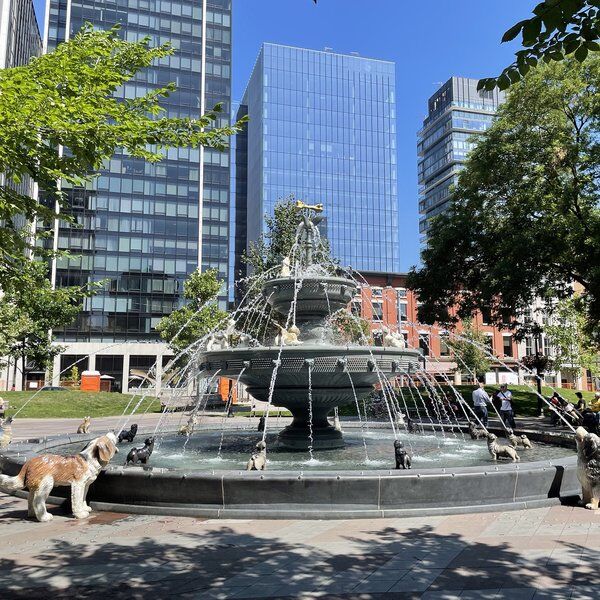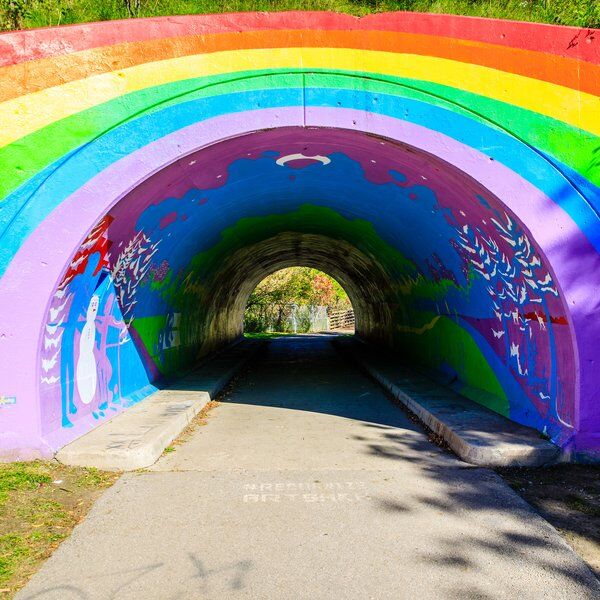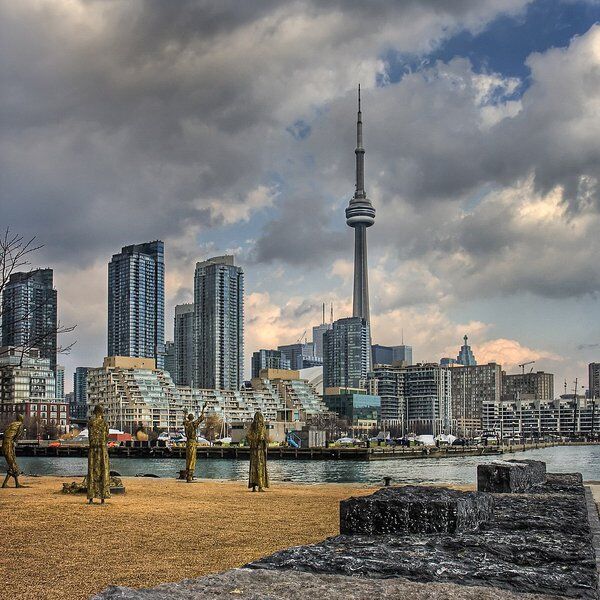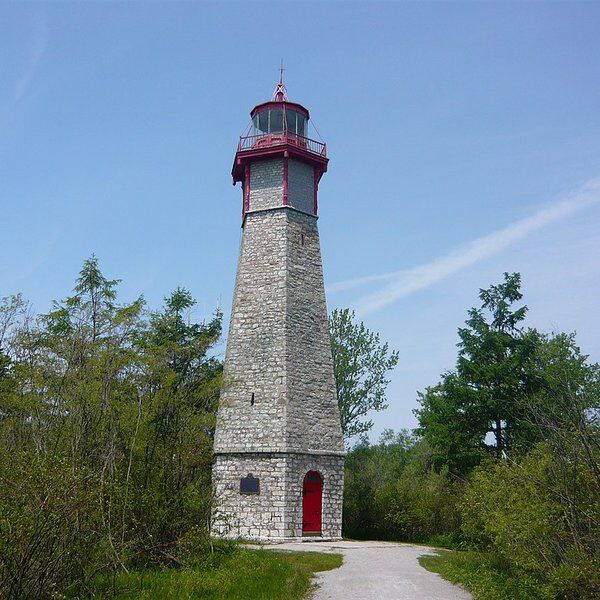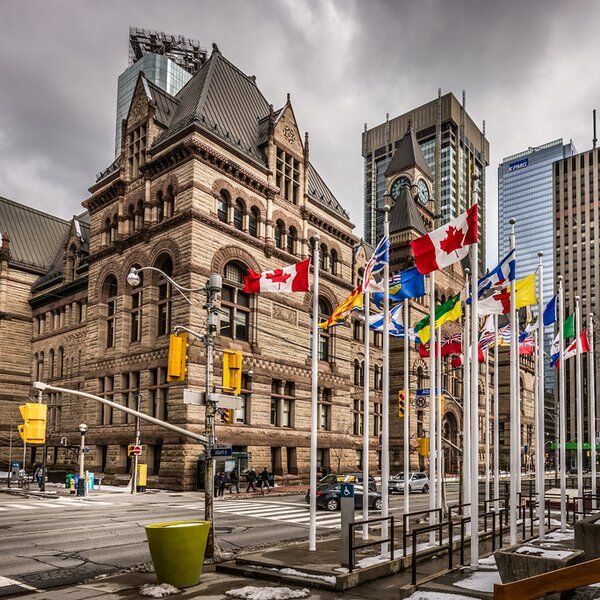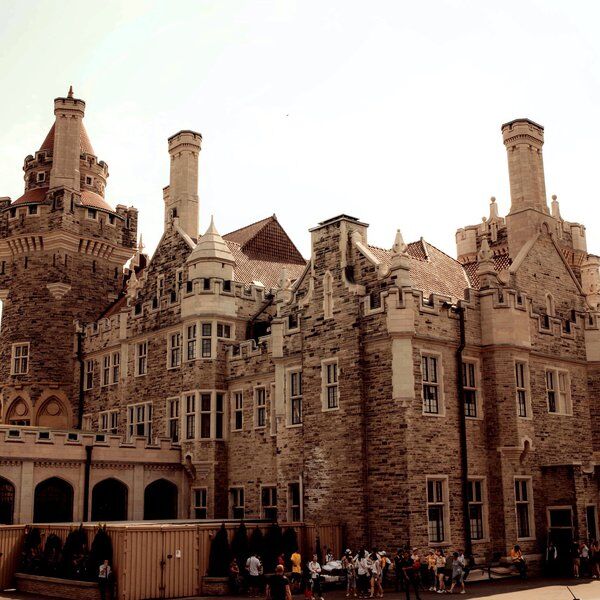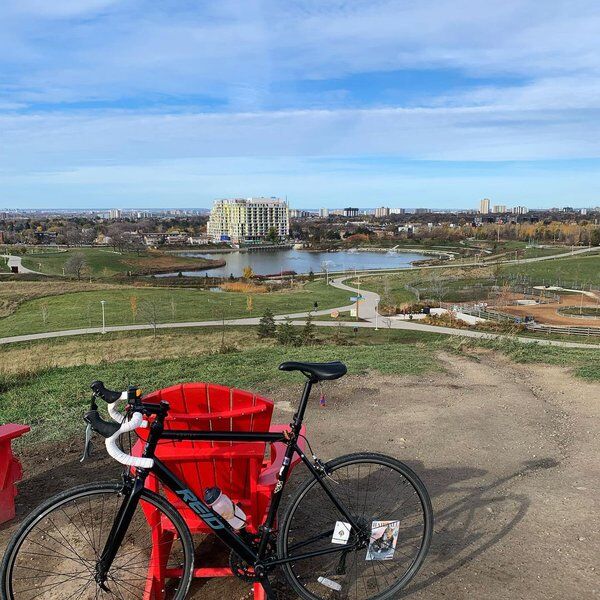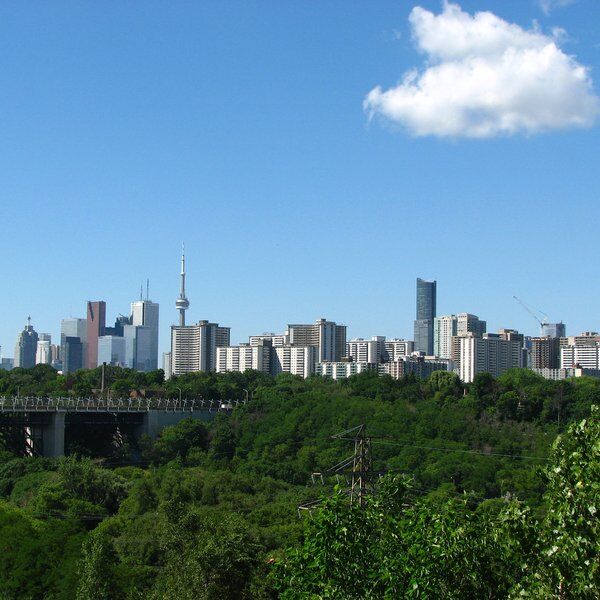Discover the Toronto Necropolis
Situated on the west side of the Don River Valley in Toronto’s Cabbagetown neighbourhood, the Toronto Necropolis spotlights the city’s burial history. Established in the mid-19th century, it was envisioned as a more dignified alternative to Toronto’s earlier, overcrowded cemeteries.
At a time when class, race, and religious divisions often dictated burial practices, the Necropolis provided an inclusive resting place for those who were historically marginalized. Among the individuals interred here are political trailblazers, cultural figures, and freedom seekers who arrived in Canada via the Underground Railroad, including members of Toronto’s pioneering Black community.
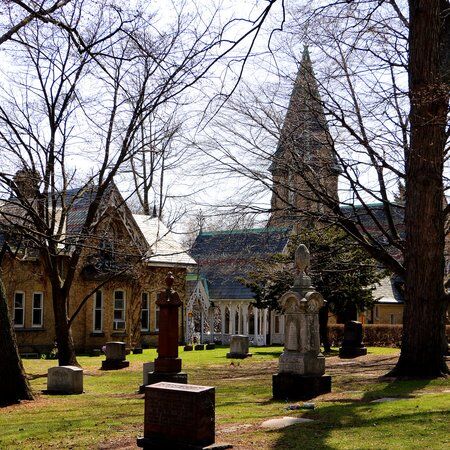
The Origins of the Toronto Necropolis
By the mid-19th century, Toronto’s population was expanding rapidly, and its existing burial grounds were struggling to keep up. During this time, many of the city’s cemeteries were affiliated with specific religious institutions, leaving those outside established faith communities with limited options for interment.
One such burial ground, Potter’s Field—located near what is now the intersection of Bloor and Yonge Streets—had become overcrowded and unsustainable. In response, municipal leaders secured 15 acres of land overlooking the Don Valley, north of what is now Winchester Street.
Unlike the segregated cemeteries of the era, the Necropolis was city-owned and open to individuals of all backgrounds, regardless of religious affiliation or social status. The name, derived from the Greek word for “city of the dead,” reflected its role as a progressive and inclusive burial ground.
During the following decades, bodies from Potter’s Field were carefully transferred to the Necropolis, a process that lasted into the 1870s. Some individuals were reburied with their original headstones, while others, particularly those whose identities were unknown, were laid to rest in unmarked graves. The integration of these early burials with newer interments contributes to the cemetery’s unique historical significance.

The Toronto Necropolis: A Burial Ground for All
At a time when many cemeteries catered exclusively to specific religious or social groups, the Necropolis stood out as a space that welcomed people from all walks of life. It became the final resting place for Methodists, Baptists, Black Canadians, and others who had been excluded from church-affiliated graveyards.
Additionally, the Necropolis provided space for those often deemed unfit for burial in consecrated ground, including the impoverished, individuals with mental illnesses, and even some of the city’s early sex workers and criminals.
The cemetery’s founding reflected a broader shift in burial customs, prioritizing accessibility and dignity in death. More than just a burial site, the Toronto Necropolis remains a monument to the city’s evolving social fabric, preserving the histories of those who shaped its past and ensuring their legacies endure.
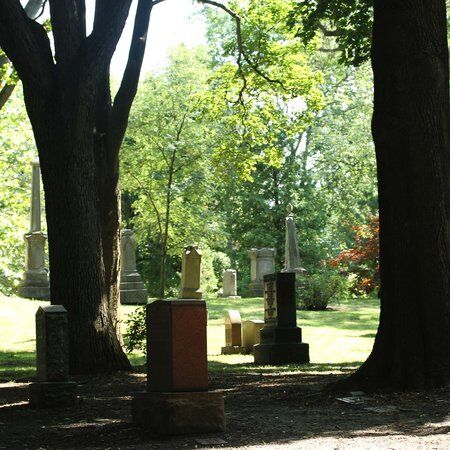
Burials and Toronto’s Black History at the Necropolis
Political and Cultural Icons
The Toronto Necropolis is the final resting place of many individuals who shaped Canada’s political, cultural, and social landscape. Among them is William Lyon Mackenzie, Toronto’s first mayor and a leading figure in the Upper Canada Rebellion. His grave continues to draw visitors interested in Canadian history.
Another prominent figure interred here is George Brown, a Father of Confederation and founder of The Globe, which later became The Globe and Mail. His contributions to journalism and political reform played a crucial role in shaping the nation. John Ross Robertson, founder of the Toronto Telegram, is also buried here, his influence on Canadian media still recognized today.
More recently, the Necropolis became the resting place of Jack Layton, former leader of the New Democratic Party (NDP). Known for his progressive politics and commitment to social justice, Layton’s grave has become a site of tribute for Canadians inspired by his leadership.
Contributions to Medicine and Sports
The Necropolis is also home to Dr. Anderson Ruffin Abbott, Canada’s first Black-born physician. Abbott served as a surgeon during the American Civil War and played a key role in advancing Black rights in Canada. His achievements remain a testament to the contributions of Black Canadians to medicine and civil rights.
Sports history is represented as well, with the world-champion rower Ned Hanlan buried at the Necropolis. Hanlan’s victories in competitive rowing brought international recognition to Canadian athletics in the late 19th century.
The Necropolis and Toronto’s Black Community
Beyond individual figures, the Toronto Necropolis has played a significant role in the city’s Black history. Throughout the 19th century, Toronto became a refuge for formerly enslaved individuals arriving via the Underground Railroad. Many settled in St. John’s Ward, a diverse immigrant community that housed Black, Irish, Chinese, Italian, and Eastern European residents.
Pssst! Learn more about America’s Underground Railroad here: Underground Railroad Museum - Philadelphia, United States.
Several pioneering Black Canadians who contributed to Toronto’s development are buried here, including Thornton and Lucie Blackburn. The Blackburns, who escaped enslavement in Kentucky, established Toronto’s first horse-drawn taxi service, leaving a lasting legacy as entrepreneurs and community leaders.
The Necropolis is also the final resting place of members of the Jackson family, another influential Black Canadian family that played a significant role in shaping Toronto’s early Black communities.

Features That Make the Toronto Necropolis Stand Out
Inside the Toronto Necropolis, the landscape is dotted with mature trees and shrubs that create a peaceful habitat for local wildlife—think cheerful chickadees, curious woodpeckers, and even the occasional squirrel putting on a show. This lush, natural setting has been respectfully preserved, making every visit feel restorative and peaceful.
The Gothic Revival Chapel & Crematorium
At the heart of the Necropolis is its chapel, built in 1872 by renowned architect Henry Langley (who even has his tombstone here!). This chapel is a brilliant example of High Victorian Gothic architecture. Picture a dramatic stone vault entrance, a steep, gabled roof with jagged edges, and an asymmetrical tower that adds a twist to the design. Crafted from yellow brick and accented with intricate iron fences, trefoils, and decorative finials, the chapel is nothing short of a masterpiece.
You might also notice the attached crematorium—also built with the same charming yellow brick. Though it sits just a few feet above ground level (partly because it’s nestled into the landscape), this facility streamlines the cremation process. After a service, coffins are gracefully moved from the chapel onto a raised platform equipped with brass rollers, making the transition both efficient and dignified.
The Lych Gates
One of the most enchanting features of the Necropolis is its grand lych gate. Stretching across the entrance—both for walkers and drivers—this white wooden arch is reminiscent of a traditional Resurrection gate. With its ornate carvings, tri-chromatic slate roof tiles, and decorative verge boards, the gate is a testament to classic Gothic Revival style.
A Monument to Rebellion and Change
A striking monument within the cemetery commemorates Samuel Lount and Peter Matthews, two men executed in 1838 for their roles in the Mackenzie Rebellion. Their memorial serves as a reminder of Toronto’s turbulent political history and the sacrifices made in the pursuit of democratic reform.
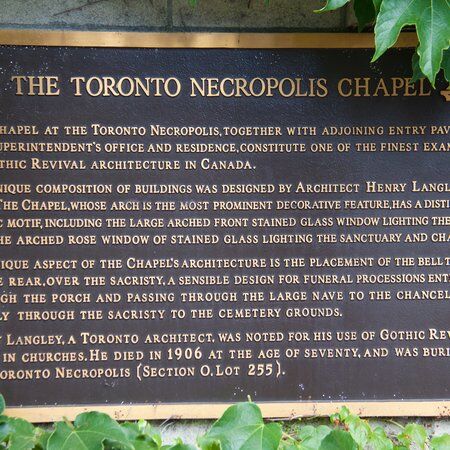
Visiting the Toronto Necropolis
More than 170 years since its founding, the Necropolis remains an active burial site with limited space still available for interments. It is admired not only for its historical and architectural significance but also for the personal stories woven into its landscape.
Visitors explore the grounds to honor notable figures, reflect on the cemetery’s role in shaping Toronto’s diverse identity, and appreciate its striking Gothic Revival architecture. If you’re ready to experience the Toronto Necropolis for yourself, here are a few tips to make your visit memorable:
What to Expect
- A Stroll Through History: Wander among over 50,000 interred souls and marvel at centuries-old monuments. It’s an insight into Toronto’s past, but with plenty of room for your own discoveries.
- Wildlife & Nature: Take a moment to listen to the sounds of the local birds and enjoy the shade provided by centuries-old trees. It’s the perfect escape on a hot summer day (seriously, SW Ontario knows how to crank up the heat!).
Visiting Hours
- April 1 to October 31: Gates close at 8:00 PM.
- November 1 to March 31: Gates close at 5:30 PM.

Explore Beyond the Toronto Necropolis with CityDays
Ready to take your adventure to the next level? If you’re interested in exploring other hidden gems we think you will enjoy one of our CityDays Treasure Hunts in Toronto and in particular, the Old Town Hunt.
Imagine racing through historic neighborhoods, uncovering secret clues, and bonding with your team over intriguing puzzles—all while learning fascinating tidbits about Toronto’s past. Our tours aren’t just limited to Toronto; we offer experiences across the globe, turning every city into your personal playground.
So, if the Toronto Necropolis has sparked your curiosity, why not extend the adventure? Join us at CityDays for a tour that’s as educational as it is exhilarating. Who knew history could be this fun?
